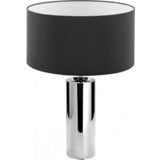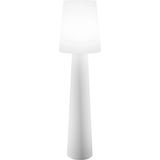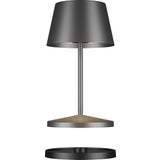The Right Lights
Proper residential lighting is important because it determines the effect the living spaces have. There are now more lighting possibilities available than ever, making the proper illumination into an art.
It's very important to start thinking about lighting as soon as you are ready to furnish or build a home. The targeted use of lighting gives individual rooms character and atmosphere. Proper placement of a light source is as important as the type of lamp you use. This helps to highlight individual areas of a room that can be illuminated separately.
On principle, a room looks comfortable when light is visible, but the light source remains hidden. In this case, indirect light radiates from ceilings and walls. However, in areas where you read or work, direct lighting is best.
The largest selection of all time
With the departure of the light bulb as a necessary tool, the selection of lamps available is greater than ever. Today you can choose between LEDs, energy saving lamps and halogen lamps. They all have advantages and disadvantages. Energy-saving lamps are the best and last the longest, but only if they are not constantly switched on and off. They are suitable for rooms where light is constant. LEDs have a high efficiency and like halogen lights, are suitable for spot illumination. Currently LEDs are still expensive, but they consume little electricity and last a very long time. If you would like to use a dimmer switch, you should rely on halogen lamps.
Lumen and Kelvin
The watt details of a lightbulb are no longer as important as the used to be. How do you know how bright a 12 Watt, Energy Saving lightbulb is? "Lumen" is cited when describing the brightness of the light. 630-850 lumens has approximately the same brightness as a 60-watt bulb.
Kelvin describes the color of the light. Cosy light for the living room, would be around 2700-3300 Kelvin. At around 5000 Kelvin, the light is a bright white, which is well suited for working. At around 6,000 Kelvin you'll see a daylight white.
Depending on the space, you should opt for different lighting concepts. Here is a brief list of options:
Living room: we traditionally spend a lot of time in this room. Especially in winter, we like to relax in the living room when it's freezing cold outside. Besides solid basic lighting in the form of indirect light, you should also have several other light sources, which also helps the space feel larger and creates a cozy and comfortable atmosphere. For reading on the couch, direct light is important. For this purpose is a pivoted lamp could be used. The TV should also not be directly illuminated, otherwise you could create disturbing light reflections.
Kitchen: The kitchen is not only for cooking, but also for gathering together. Therefore, the lighting should be both functional and comfortable. The stove, sink and work surfaces should be illuminated directly. Above the dining table, warm light is best. Pendant lamps with dimmable lighting are highly suitable.
Bathrooms: The bathroom is a little oasis of calm and relaxation. It is important to buy lights that are waterproof. Make sure there is optimal lighting, for example, in the form of recessed spotlights in the ceiling. The mirror area should also be specially targeted and illuminated. A few light sources that emit warm, not too bright light are a good idea because they make relaxing, long hours in the bathtub really comfortable.
Bedrooms: In addition to general lighting, you should consider whether the bed, mirrors, boxes and cabinets should be separately illuminated. It is important that a comfortable atmosphere prevails. Think about having a light by the bed in the form of fixed wall lights, in case you would like to read in bed.
Study: The right lighting is the basis for healthy work. The wrong light, can hurt your eyes. Headaches and eye fatigue are the consequences of bad lighting. The ideal situation would be a desk near a window. Artificial lighting can be made up of a combination of indirect ambient lighting and extra workplace lamps.
Related products
-

Fink - The Art of Living Home Table Lamp, Black
-48%- Black
- Grey
- Cream
- Highest quality workmanship
- Polished stainless steel base
- Total height: approx. 60 cm
€ 179,90 € 349,00Delivery by December 20
-

8 seasons design Indoor & Outdoor Light / All Seasons - No. 1 / Height 160 cm, white
- UV-resistant
- Height: 160 cm
- Suitable for outside and inside
€ 249,99Delivery by January 13
-

Villeroy & Boch SEOUL 2.0 Table Lamp, Graphite
-20% Bestseller- Graphite
- Sand
- White
- Anthracite
- Black
- +6
- Material: coated aluminium
- For indoor & outdoor use
- Cordless & rechargeable
€ 143,20 € 179,99Delivery by December 20
